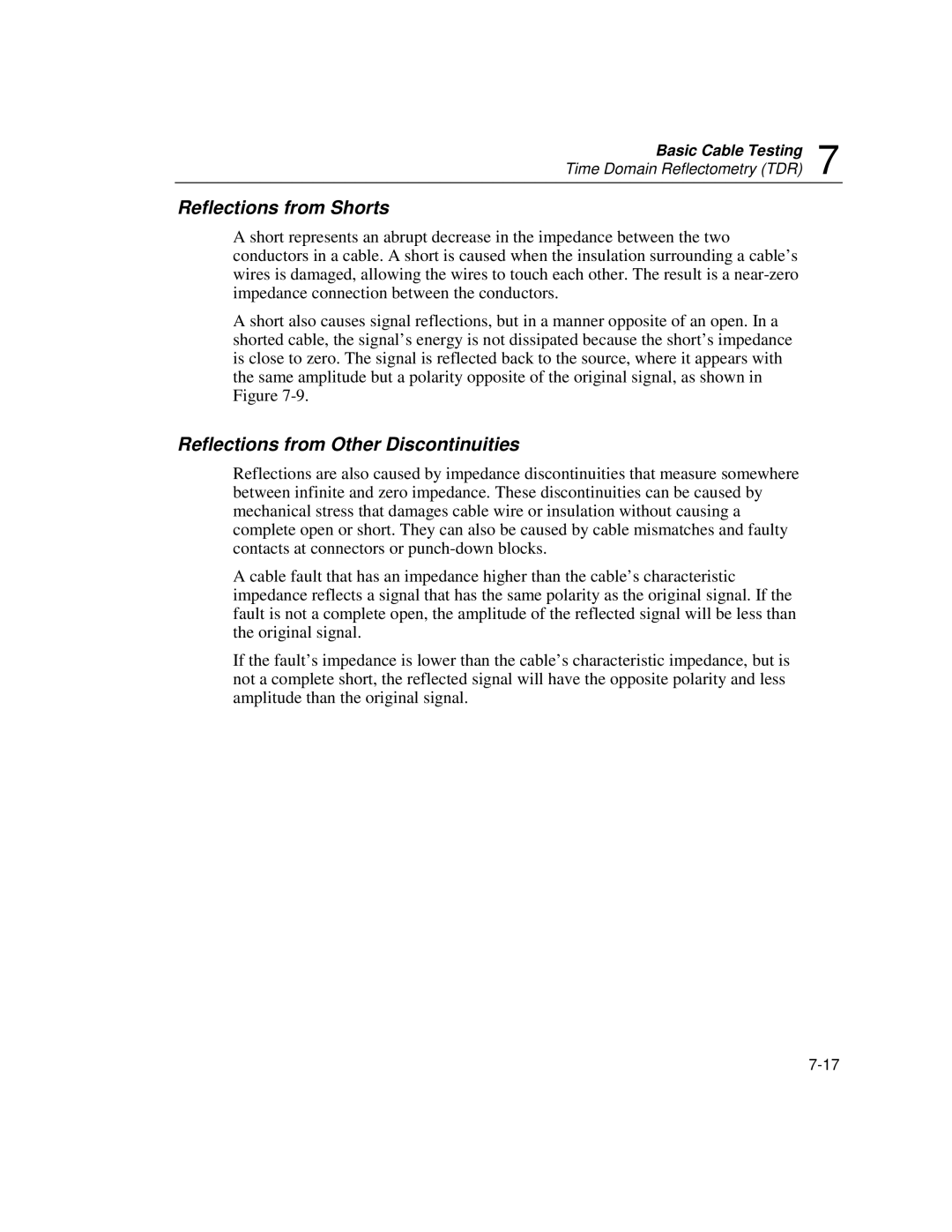Basic Cable Testing 7
Time Domain Reflectometry (TDR)
Reflections from Shorts
A short represents an abrupt decrease in the impedance between the two conductors in a cable. A short is caused when the insulation surrounding a cable’s wires is damaged, allowing the wires to touch each other. The result is a
A short also causes signal reflections, but in a manner opposite of an open. In a shorted cable, the signal’s energy is not dissipated because the short’s impedance is close to zero. The signal is reflected back to the source, where it appears with the same amplitude but a polarity opposite of the original signal, as shown in Figure
Reflections from Other Discontinuities
Reflections are also caused by impedance discontinuities that measure somewhere between infinite and zero impedance. These discontinuities can be caused by mechanical stress that damages cable wire or insulation without causing a complete open or short. They can also be caused by cable mismatches and faulty contacts at connectors or
A cable fault that has an impedance higher than the cable’s characteristic impedance reflects a signal that has the same polarity as the original signal. If the fault is not a complete open, the amplitude of the reflected signal will be less than the original signal.
If the fault’s impedance is lower than the cable’s characteristic impedance, but is not a complete short, the reflected signal will have the opposite polarity and less amplitude than the original signal.
